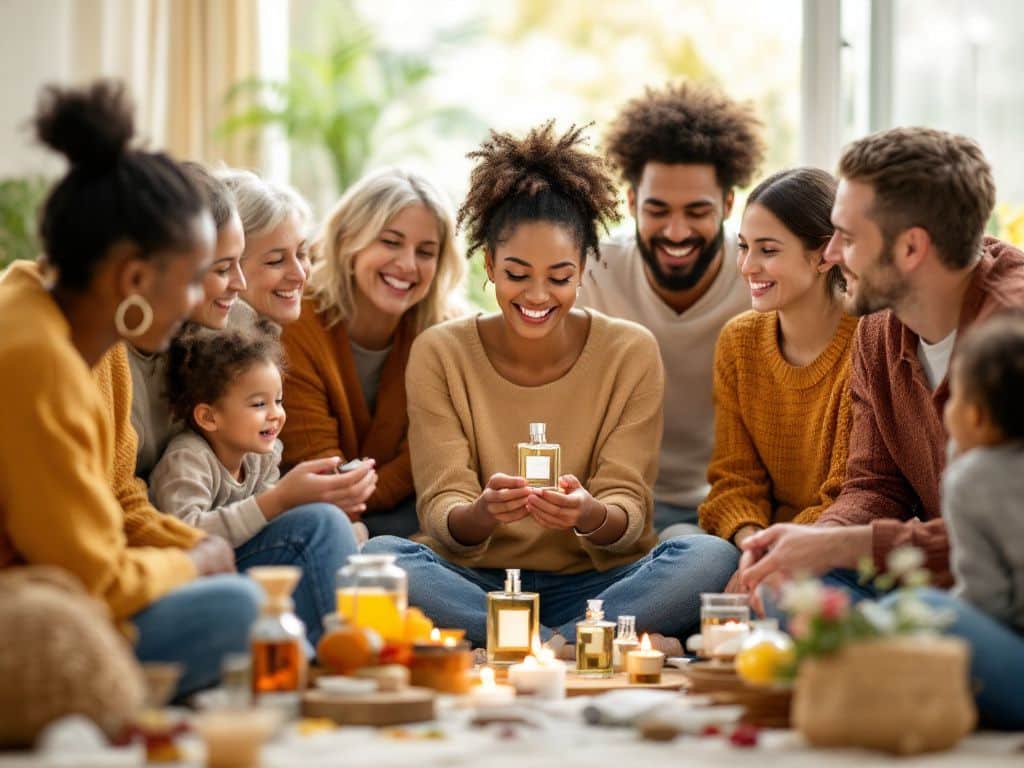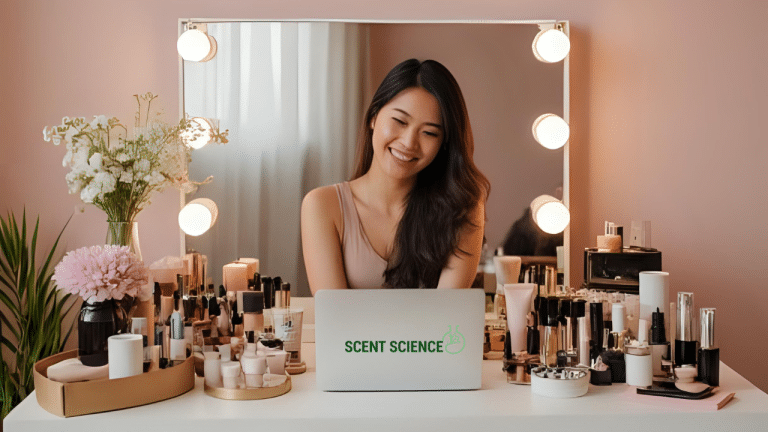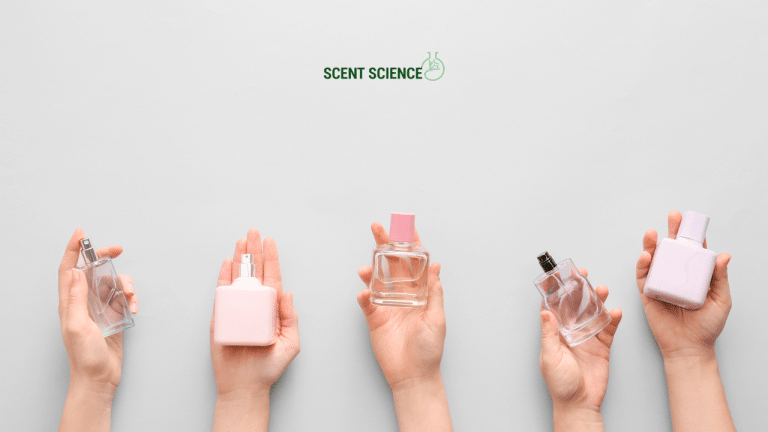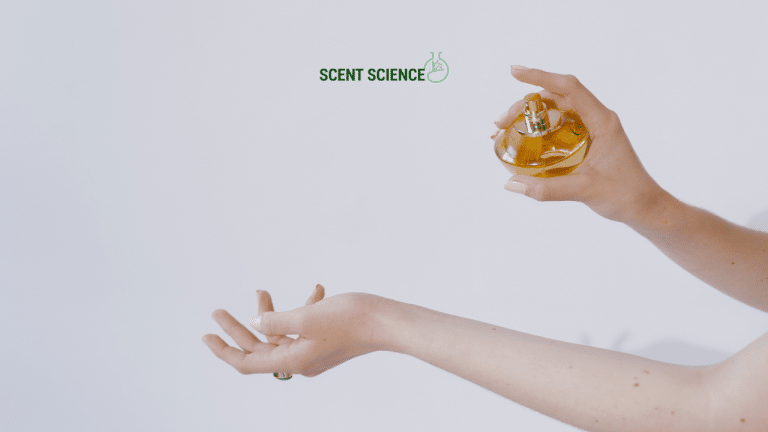Fragrance has long been a silent yet powerful communicator, forging connections across cultures and communities. Some scents whisk us away to cherished places, while others bind us with new friends and shared memories. Recently, we asked our readers to share their stories about how our fragrance community stories have transcended mere aromas, becoming the threads that weave them into the rich tapestry of human connection. Join us on this olfactory journey as we delve into the compelling narratives of scent memories that unite us.
Table of Contents
ToggleThe Science Behind Scent and Memory
Before diving into the stories, it’s essential to understand the science behind why scents resonate so deeply with us. The olfactory system is intricately linked to the limbic system, the part of our brain involved in emotion and memory. According to a study published in *Neuron* (Herz, 2016), this connection explains why a whiff of a familiar scent can evoke vivid memories and emotions. This physiological bond forms the foundation for the emotional connection to smells, underscoring why fragrances can be powerful community builders.
Real-World Application: Fragrance in Dementia Care
In a practical setting, this understanding finds application in dementia care, where scent is utilized to trigger memory recall. Fragrances like lavender and rosemary are often used to soothe patients while possibly helping them regain lost memories. This caregiving approach is not only rooted in traditional knowledge but now also in modern-day neuropsychological practices. It illustrates how communal scent experiences can build empathy and understanding within care communities.
Heartfelt Stories: When Scents Become the Common Language
From Anonymity to Friendship: Naomi’s Journey
Naomi from Portland shared an extraordinary account of friendship beginning in a most unusual way. 🌸 Naomi often frequented a local perfume shop, bonding over fragrance notes with Clara, a fellow patron. Their mutual love for a particular jasmine scent led to spontaneous coffee dates, resulting in a blossoming friendship built on those initial aroma-laden conversations. This exemplifies how shared scent experiences can break down barriers, turning strangers into allies.

Professional Insight
Inhaling the same perfume might not tangibly change a social atmosphere on the surface, but it often synchronizes emotional moods, as confirmed by research from the *Journal of Chemical Senses*. Through this study, it was found that communal scent experiences create a shared emotional space, vital for fostering genuine social bonds (Ackerman et al., 2020).
The Annual Lavender Festival: Helen’s Community Bonding
For Helen in Provence, attending the local lavender festival is more than a tradition; it is a cherished community event. 🌿 The scent of fresh lavender fields is a call to gather, bringing people of all ages together. Each year, as Helen joins her neighbors in harvesting, drying, and creating lavender products, the shared labor fosters community spirit—an exemplary case of how scent memories can become integral to regional identity.
Technical Walkthrough: Organizing a Scent-Driven Community Event
- Choose a signature scent: Select a fragrance integral to your culture or region.
- Scent-centric activities: Plan events such as product-making workshops or cooking sessions involving the scent.
- Interactive storytelling: Encourage attendees to share stories tied to the fragrance, fostering emotional connection and cultural heritage appreciation.
Industry standards suggest that such interactive multisensory experiences not only enhance participation but also amplify the olfactory narrative, strengthening community ties.
Bridging Generations: Tom and Elisa’s Intergenerational Narrative

For Tom and his granddaughter Elisa, fragrances serve as a bridge between generations. 🌾 Elisa inherited her grandmother’s favorite rose-scented perfume bottle, which has become a conversation starter exploring family history, traditions, and values. Their story shows how an emotional connection to smells can transcend time, serving as an intergenerational link within families.
Expert Analysis
Research in *Environmental Psychology* points out that shared experiences with scents within family units significantly enhance interpersonal relationships and understanding, providing a communication channel when words fall short (Carrus et al., 2019).
Case Study: The Scent Circle Program
A non-profit organization recently implemented the “Scent Circle” program in community centers across the US, creating gatherings focused on shared scent experiences to promote cultural exchange and belonging. This program highlights the scalability of using scents to foster communal bonds at both micro and macro-community levels.
Scent in Workplace Culture: Fostering a Sense of Belonging
The ‘Aroma Uplift’: A Corporate Case Study
In a refreshing twist, James, an HR manager, initiated the ‘Aroma Uplift’ project at his firm, integrating diffused scents like citrus and peppermint to invigorate office spaces and encourage creativity. 🍊 This initiative has not only boosted morale but also increased workplace engagement, exemplifying the integration of scent memories into corporate environments to cultivate a sense of community and belonging.
Standards & Best Practices

Instituting such projects requires adherence to industry standards outlined by organizations like the American Society for Testing and Materials (ASTM), which recommend conducting scent-sensitivity assessments and ensuring adequate air circulation—vital steps for the successful implementation of scent environments in professional settings.
Crafting Your Shared Scent Journey
As you explore your fragrance community stories, consider these actionable tips to enhance your own scent experiences and build community ties:
- Cultivate Scent Creations: Curate personal scent kits to share with friends and family, providing an opportunity for storytelling and bond creation.
- Host ‘Scented Memories’ gatherings: Organize informal meetups centered around sharing personal fragrance experiences, enhancing community connectivity.
- Engage in Local Aroma Events: Participate in fragrance festivals or community events that celebrate regional scents, irrespective of scale.
- Incorporate Scent Journaling: Start documenting personal scent memories and experiences which could be shared in workshops or community evenings.
Conclusion: The Fragrance Bond
The enchanting world of fragrances goes beyond sensory pleasure; it is a powerful connector deeply embedded in our social fabric. From bridging generational gaps to uniting communities around local identity, fragrance community stories tell of lasting bonds forged through the common love of scent. As the stories of Naomi, Helen, Tom, and James reveal, there exists an incredible opportunity for each of us to create and share scent experiences, nurturing the community spirit. Let this be an invitation to reflect, participate, and weave your own story into the rich narrative of olfactory camaraderie. 🌺
In essence, as validated by numerous studies and real-world applications, while we might walk into a room for a business meeting or social gathering, it’s the unforgettable scent experiences that many times bring us together, keep us engaged, and empower us to build resilient communities.
Frequently Asked Questions
What are the benefits of using a hair mask in my hair care routine?
Using a hair mask can provide several benefits, including hydration, smoothing, strengthening, curl definition, heat protection, and damage repair. Hair masks infuse the hair with moisture, help coat the hair shaft to seal split ends, reduce breakage, and protect the hair from heat styling and environmental damage[1][4].
What ingredients should I look for in a hair mask?
Effective hair masks often include ingredients such as coconut oil, argan oil, shea butter, honey, avocado oil, green tea, and coconut water. These ingredients provide nourishment, moisturize, and protect the hair, offering benefits like softening, moisturizing, and protecting against damage[2][5].
How often should I use a hair mask in my routine?
You should use a hair mask whenever your hair feels dry, unmanageable, or in need of intense hydration. This can vary depending on your hair type and needs, but generally, using a hair mask once or twice a week can help maintain healthy and moisturized hair[1][4].
How do I apply a hair mask for the best results?
To apply a hair mask effectively, shampoo your hair first, then apply the mask, focusing especially on the ends where hair tends to be the most damaged. Leave the mask on for anywhere from 10 minutes to overnight, depending on the type of mask and your hair’s needs[1][4].
References







